RIDGID R3031 Handleiding
RIDGID
Zaagmachine
R3031
Bekijk gratis de handleiding van RIDGID R3031 (28 pagina’s), behorend tot de categorie Zaagmachine. Deze gids werd als nuttig beoordeeld door 101 mensen en kreeg gemiddeld 4.9 sterren uit 51 reviews. Heb je een vraag over RIDGID R3031 of wil je andere gebruikers van dit product iets vragen? Stel een vraag
Pagina 1/28

OPERATOR’S MANUAL
ONE-HANDED RECIPROCATING SAW
MANUEL D’UTILISATION
SCIE ALTERNATIVE À UNE MAIN
MANUAL DEL OPERADOR
SIERRA ALTERNATIVA PARA UNA SOLA MANO
R3031
To register your RIDGID
product, please visit:
http://register.RIDGID.com
Pour enregistrer votre
produit de RIDGID,
s’il vous plaît la visite:
http://register.RIDGID.com
Para registrar su producto
de RIDGID, por favor visita:
http://register.RIDGID.com
TABLE OF CONTENTS
****************
General Power Tool Safety
Warnings 2-3 .........................................
Reciprocating Saw Safety Rules 3 ........
Symbols 4 ..............................................
Electrical .............................................5
Features ..............................................6
Assembly ............................................6
Operation .........................................7-8
Maintenance .......................................9
Figure Numbers (Illustrations) 10 ...........
Parts Ordering and
Service Back page ................................
TABLE DES MATIÈRES
****************
Règles de sécurité relatives aux outils
electriques 2-3 .......................................
Avertissements de sécurité relatifs scie
alternative 3 ..........................................
Symboles 4 ............................................
Caractéristiques électriques 5 ...............
Caractéristiques .................................6
Assemblage ........................................6
Utilisation .........................................7-8
Entretien .............................................9
Figure numéros (illustrations) 10 ..........
Commande de pièces et
dépannage Page arrière ........................
ÍNDICE DE CONTENIDO
****************
Advertencias de seguridad para
herramientas eléctricas 2-3 .................
Advertencias de seguridad sierra
aternativa 3 ...........................................
Símbolos 4 ............................................
Aspectos eléctricos 5 ...........................
Características ...................................6
Armado ..............................................6
Funcionamiento ............................. 7-8
Mantenimiento ...................................9
Figura numeras (ilustraciones) 10 .........
Pedidos de piezas y
servicio Pág. posterior .........................
Includes: Reciprocating Saw, Saw Blade,
Tool Bag, Operator’s Manual
Inclut : Scie alternative, lame de scie,
sacoche, manuel d’utilisation
Incluye: Sierra alternativa, hoja de sierra,
bolsa de harramientas, manual del operador
SAVE THIS MANUAL
FOR FUTURE REFERENCE
CONSERVER CE MANUEL
POUR FUTURE RÉFÉRENCE
GUARDE ESTE MANUAL
PARA FUTURAS CONSULTAS
WARNING:
To reduce the risk of injury, the
user must read and understand
the operator’s manual before
using this product.
AVERTISSEMENT :
Pour réduire les risques de
blessures, l’utilisateur doit lire
et veiller à bien comprendre
le manuel d’utilisation avant
d’utiliser ce produit.
ADVERTENCIA:
Para reducir el riesgo de
lesiones, el usuario debe leer
y comprender el manual del
operador antes de usar este
producto.

2 - English
GENERAL POWER TOOL SAFETY WARNINGS
WARNING
Read all safety warnings and all instructions.
Failure to follow the warnings and instructions may
result in electric shock, fire and/or serious injury.
Save all warnings and instructions for future reference.
The term “power tool” in the warnings refers to your mains-
operated (corded) power tool or battery-operated (cordless)
power tool.
WORK AREA SAFETY
Keep work area clean and well lit. Cluttered or dark
areas invite accidents.
Do not operate power tools in explosive atmospheres,
such as in the presence of flammable liquids, gases
or dust. Power tools create sparks which may ignite the
dust or fumes.
Keep children and bystanders away while operating a
power tool. Distractions can cause you to lose control.
ELECTRICAL SAFETY
Power tool plugs must match the outlet. Never modify
the plug in any way. Do not use any adapter plugs with
earthed (grounded) power tools. Unmodified plugs and
matching outlets will reduce risk of electric shock.
Avoid body contact with earthed or grounded surfaces
such as pipes, radiators, ranges and refrigerators.
There is an increased risk of electric shock if your body
is earthed or grounded.
Do not expose power tools to rain or wet conditions.
Water entering a power tool will increase the risk of electric
shock.
Do not abuse the cord. Never use the cord for carrying,
pulling or unplugging the power tool. Keep cord away
from heat, oil, sharp edges or moving parts. Damaged
or entangled cords increase the risk of electric shock.
When operating a power tool outdoors, use an
extension cord suitable for outdoor use. Use of a cord
suitable for outdoor use reduces the risk of electric shock.
If operating a power tool in a damp location is
unavoidable, use a ground fault circuit interrupter
(GFCI) protected supply. Use of a GFCI reduces the risk
of electric shock.
PERSONAL SAFETY
Stay alert, watch what you are doing and use com-
mon sense when operating a power tool. Do not use
a power tool while you are tired or under the influence
of drugs, alcohol or medication. A moment of inattention
while operating power tools may result in serious personal
injury.
Use personal protective equipment. Always wear eye
protection. Protective equipment such as dust mask, non-
skid safety shoes, hard hat, or hearing protection used for
appropriate conditions will reduce personal injuries.
Prevent unintentional starting. Ensure the switch is in
the off-position before connecting to power source
and/or battery pack, picking up or carrying the tool.
Carrying power tools with your finger on the switch or
energising power tools that have the switch on invites
accidents.
Remove any adjusting key or wrench before turning
the power tool on. A wrench or a key left attached to a
rotating part of the power tool may result in personal injury.
Do not overreach. Keep proper footing and balance at
all times. This enables better control of the power tool in
unexpected situations.
Dress properly. Do not wear loose clothing or jewellery.
Keep your hair, clothing and gloves away from moving
parts. Loose clothes, jewellery or long hair can be caught
in moving parts.
If devices are provided for the connection of dust
extraction and collection facilities, ensure these are
connected and properly used. Use of dust collection
can reduce dust-related hazards.
Do not wear loose clothing or jewelry. Contain long
hair. Loose clothes, jewelry, or long hair can be drawn
into air vents.
Do not use on a ladder or unstable support. Stable
footing on a solid surface enables better control of the
power tool in unexpected situations.
POWER TOOL USE AND CARE
Do not force the power tool. Use the correct power
tool for your application. The correct power tool will
do the job better and safer at the rate for which it was
designed.
Do not use the power tool if the switch does not turn
it on and off. Any power tool that cannot be controlled
with the switch is dangerous and must be repaired.
Disconnect the plug from the power source and/or
the battery pack from the power tool before making
any adjustments, changing accessories, or storing
power tools. Such preventive safety measures reduce
the risk of starting the power tool accidentally.
Store idle power tools out of the reach of children and
do not allow persons unfamiliar with the power tool
or these instructions to operate the power tool. Power
tools are dangerous in the hands of untrained users.
Maintain power tools. Check for misalignment or bind-
ing of moving parts, breakage of parts and any other
condition that may affect the power tool’s operation.
If damaged, have the power tool repaired before use.
Many accidents are caused by poorly maintained power
tools.
Keep cutting tools sharp and clean. Properly main-
tained cutting tools with sharp cutting edges are less
likely to bind and are easier to control.

3 - English
GENERAL POWER TOOL SAFETY WARNINGS
Use the power tool, accessories and tool bits etc.
in accordance with these instructions, taking into
account the working conditions and the work to be
performed. Use of the power tool for operations different
from those intended could result in a hazardous situation.
SERVICE
Have your power tool serviced by a qualified repair
person using only identical replacement parts. This
will ensure that the safety of the power tool is maintained.
When servicing a power tool, use only identical
replacement parts. Follow instructions in the Main-
tenance section of this manual. Use of unauthorized
parts or failure to follow Maintenance instructions may
create a risk of shock or injury.
RECIPROCATING SAW SAFETY WARNINGS
Hold power tool by insulated gripping surfaces, when
performing an operation where the cutting accessory
may contact hidden wiring or its own cord. Cutting
accessory contacting a “live” wire may make exposed
metal parts of the power tool “live” and could give the
operator an electric shock.
Use clamps or another practical way to secure and
support the workpiece to a stable platform. Holding
the work by hand or against your body leaves it unstable
and may lead to loss of control.
Know your power tool. Read operator’s manual care-
fully. Learn its applications and limitations, as well
as the specific potential hazards related to this tool.
Following this rule will reduce the risk of electric shock,
fire, or serious injury.
Always wear eye protection with side shields marked
to comply with ANSI Z87.1. Following this rule will
reduce the risk of serious personal injury.
Protect your lungs. Wear a face or dust mask if the
operation is dusty. Following this rule will reduce the
risk of serious personal injury.
Protect your hearing. Wear hearing protection during
extended periods of operation. Following this rule will
reduce the risk of serious personal injury.
Inspect tool cords periodically and, if damaged, have
repaired at your nearest authorized service center.
Constantly stay aware of cord location. Following this
rule will reduce the risk of electric shock or fire.
Check damaged parts. Before further use of the
tool, a guard or other part that is damaged should
be carefully checked to determine that it will operate
properly and perform its intended function. Check for
alignment of moving parts, binding of moving parts,
breakage of parts, mounting, and any other conditions
that may affect its operation. A guard or other part that
is damaged should be properly repaired or replaced
by an authorized service center. Following this rule will
reduce the risk of shock, fire, or serious injury.
Make sure your extension cord is in good condi-
tion. When using an extension cord, be sure to use
one heavy enough to carry the current your product
will draw. A wire gauge size (A.W.G.) of at least 14 is
recommended for an extension cord 50 feet or less
in length. A cord exceeding 100 feet is not recom-
mended. If in doubt, use the next heavier gauge. The
smaller the gauge number, the heavier the cord. An
undersized cord will cause a drop in line voltage resulting
in loss of power and overheating.
Inspect for and remove all nails from lumber before
using this tool. Following this rule will reduce the risk of
serious personal injury.
If the power supply cord is damaged, it must be
replaced only by the manufacturer or by an authorized
service center to avoid risk.
Save these instructions. Refer to them frequently and
use them to instruct others who may use this product. If
you loan someone this product, loan them these instruc-
tions also.
Product specificaties
| Merk: | RIDGID |
| Categorie: | Zaagmachine |
| Model: | R3031 |
Heb je hulp nodig?
Als je hulp nodig hebt met RIDGID R3031 stel dan hieronder een vraag en andere gebruikers zullen je antwoorden
Handleiding Zaagmachine RIDGID

5 Maart 2024

8 November 2023

7 Juli 2023

2 Juli 2023

28 Juni 2023

18 Juni 2023

7 Juni 2023

6 Juni 2023

4 Juni 2023

27 Mei 2023
Handleiding Zaagmachine
- Łucznik
- Morrison
- Toolson
- Duro Pro
- Lionelo
- Efco
- Turbo-Silent
- EGO
- Topcraft
- Makita
- Shindaiwa
- Ozito
- Zipper
- Homelite
- Sterwins
Nieuwste handleidingen voor Zaagmachine
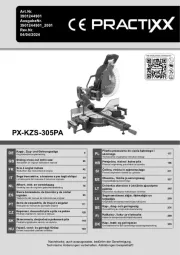
30 Juli 2025
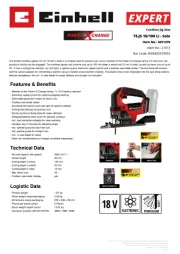
29 Juli 2025
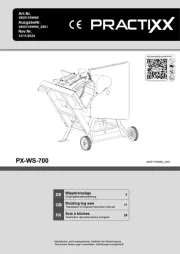
29 Juli 2025
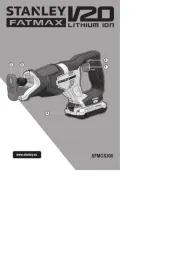
29 Juli 2025
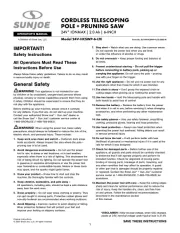
29 Juli 2025
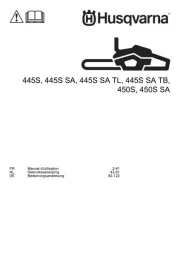
28 Juli 2025
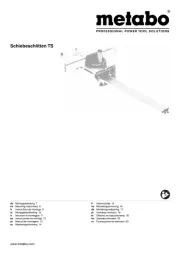
23 Juli 2025
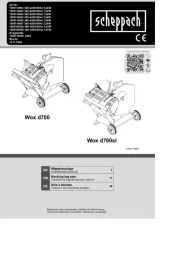
21 Juli 2025
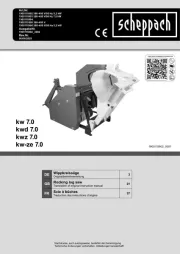
21 Juli 2025
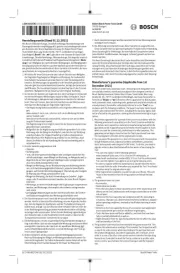
20 Juli 2025